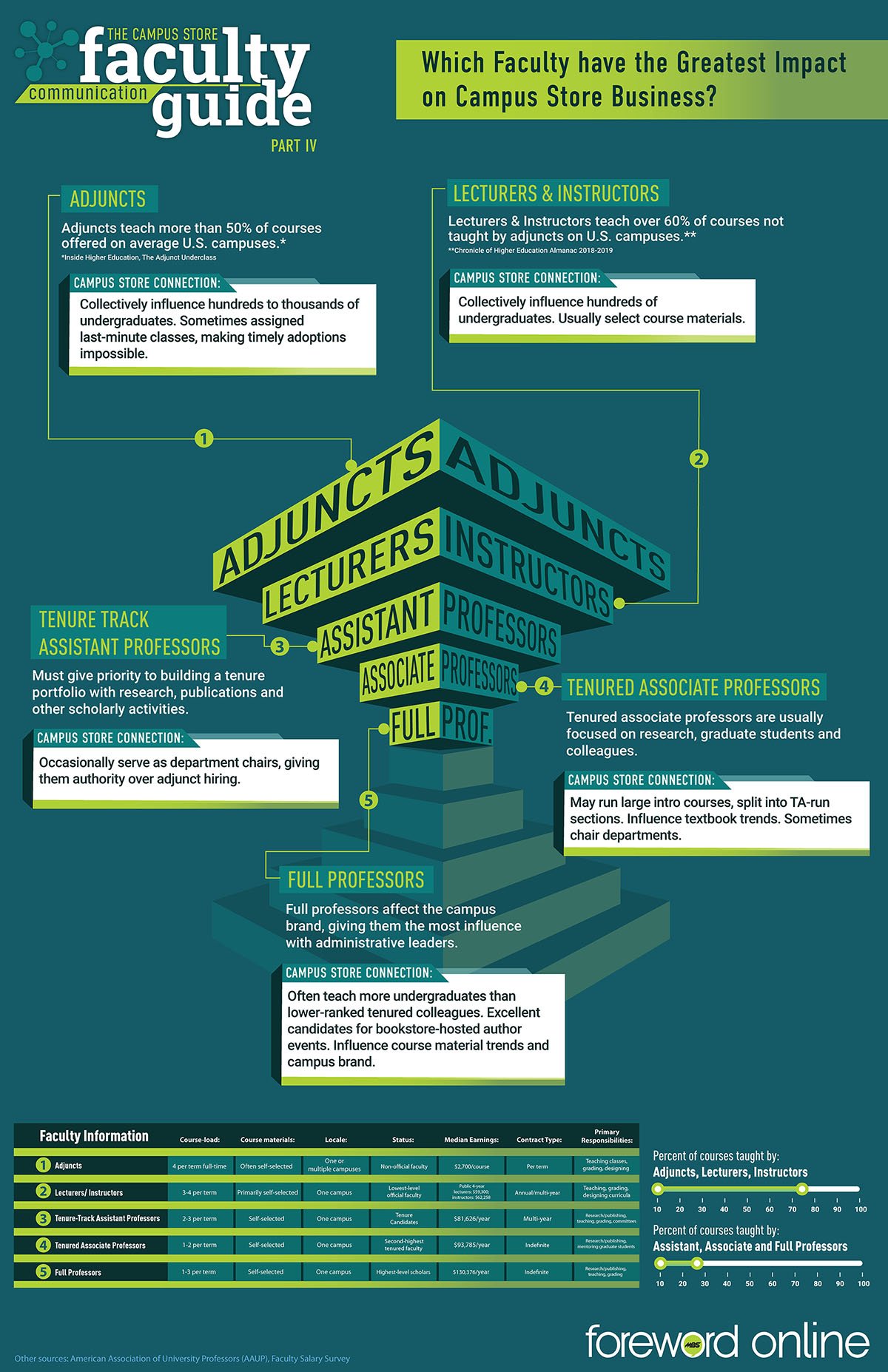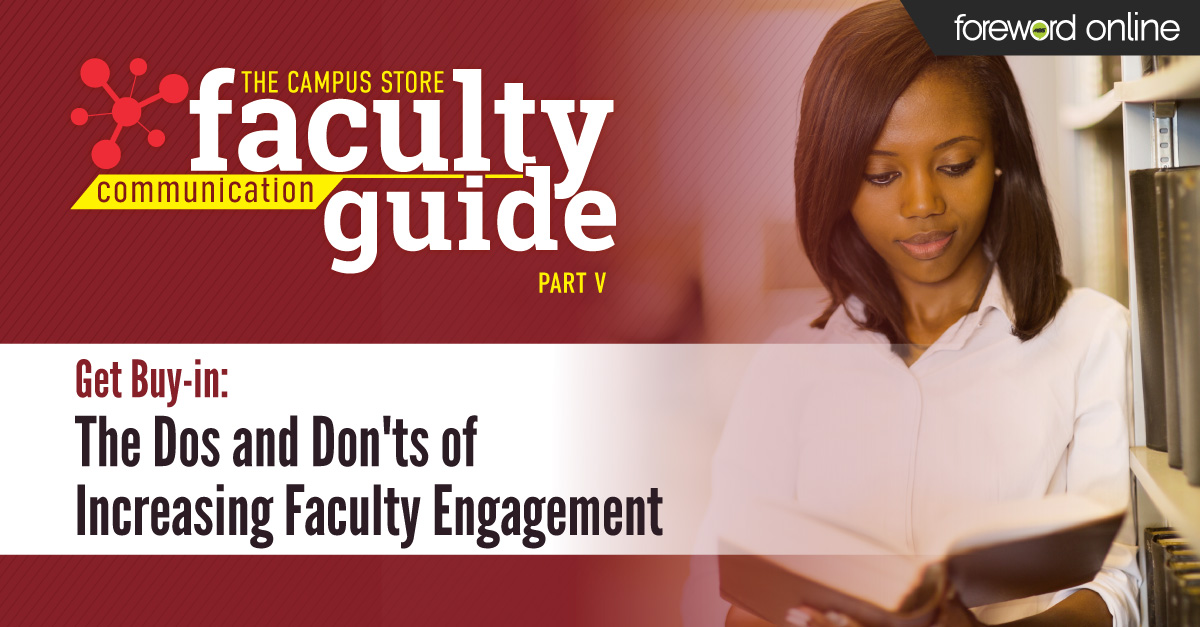Excellent campus store faculty relations start with understanding your audience. You need to know as much as you can about the context in which teachers are most likely to receive your communication. Part IV of our Campus Store Faculty Communication Guide includes an illustrated guide to the academic teaching environment, a reference you can use to increase the effectiveness of your faculty message.
Which faculty have the most contact with students?
For most campus stores, serving students is the No. 1 priority. If students top your agenda of concerns, the typical academic system can seem upside down. The teachers with the most direct impact on the academy’s tuition-paying customers — i.e. students — often have the lowest status.
Despite fewer scholarly laurels, teachers with heavy course loads have an impact on the day to day business of a college store. They often place their own adoptions and teach large introductory classes. This brings them into direct contact with greater numbers of undergraduates — especially first-year students —than just about any other campus employee.
Campus stores must reach teachers working in different contexts
Reaching out to college and university teachers presents challenges. Professors, assistant professors, associates, instructors, lecturers, adjuncts: each of these groups has different obligations, expectations and a distinct effect on the daily lives of students.
Adjuncts teach more than half the college and university courses in the country, working primarily on per term contracts. However, they are not usually included in a school’s official faculty numbers. They have little contact with administrators and tenured professors. But they encounter hundreds of undergraduates weekly.
Even though adjuncts are not technically “faculty,” it’s likely that their actions and views affect campus store business. Adjuncts often select and adopt course materials and design their own syllabus. Because they teach an abundance of first-year courses, young students often seek them out for counsel — including advice about where to buy books and whether the purchases are worthwhile. Many departments must hire adjuncts late in the term — after budget and enrollment numbers finalize. If the adjuncts have freedom to select course materials, late adoptions are inevitable.
The different worlds within the campus faculty hierarchy
This graphic depicts differences among faculty members in terms of income, job security, expectations — and student contact. As teachers ascend the academic ladder, they often have less contact with students, especially undergraduates. They teach fewer courses, interact with fewer university newcomers and adopt fewer course materials.
As you review the data, bear in mind that academia is not standardized. This infographic presents a generalized map of the system. It shows common features of the academic hierarchy that can vary on different campuses.
(Click here or on the image below to view a large version.)
Our Faculty Communication Guide series continues with Part 5: Get Buy-in: The Dos and Don'ts of Increasing Faculty Engagement.






